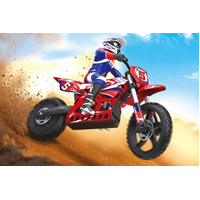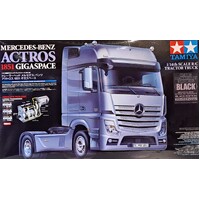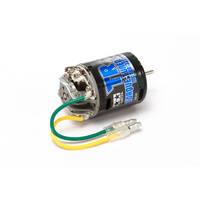Big Rig Trucks including kits
You can get your RC car already assembled (RTR=Ready-to-Run) or you can do the assembly yourself. As the name implies, Ready-to-Run cars are already assembled and typically only require a battery to run, whereas the kits don’t include electric components and you assemble the car yourself.
Which one should I choose?
In general, RTR vehicles are the better option for beginners since you’ve got more time to focus on learning how the car works. Getting to know the vehicle and learning the routines take time. With an RTR vehicle you also don’t need to worry about the compatibility of different components.
So you’re left with more time to have fun. Over time you’ll learn how to service the vehicle properly and take good care of it. And you will also find out what type of car is best for you.
Note! Servicing the vehicle and taking good care of it are just as important regardless of whether you have an RTR vehicle or assembled the vehicle yourself. It’s important to tighten up the screws regularly and carry out maintenance routines in between runs.
Assembly kits are more suitable for hobbyists who have previous experience with RC cars or for those who specifically want to get into the hobby and learn about it through building their own vehicle. Assembly kits differ from RTR vehicles in the materials the components are made of and the equipment that are included in the kits. The assembly kits usually only include the chassis, body and rims. For example tires are often not included in the kits. When you’re getting an assembly kit, make sure you know everything that’s included in the kit so that you know which components you need.
Generally, when building a specific model, the assembly kit and the required components will be more expensive than the RTR version. The assembly kits are also aimed more toward races and more experienced drivers, and the kits allow the assembly of setups that are different from the RTR vehicles. Many hobbyists assemble a race car with better electric components and upgrade other components to suit their driving habits. In conclusion, it can be said that RTR and assembly kits aren’t wholly comparable even if they had the same model name.
Checklist for buyers:
Ready-to-Run (RTR) cars:
Does the package contain a battery and a charger?
Availability of an extra battery to extend run time.
Charging time with standard charger -> need a faster charger?
Controller batteries – Typically 4 or 8 AA batteries
Make sure you have some basic tools for servicing an RTR car
Assembly kits:
Does the kit contain tires?
Does the kit contain a body?
What tools are needed?
Glue for the tires, paint for the body, oils, (differential, shocks)
Needed electric components: steering servo, speed controller, engine/motor, battery, charger and radio equipment, safety bag for the LiPo batteries
In either case, you can ask our customer servive for advice when picking up the components to make sure you won’t have any problems while setting up your car and getting it running. So do not hesitate to ask if you have any questions!





